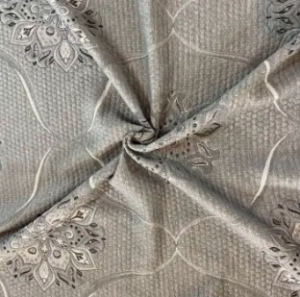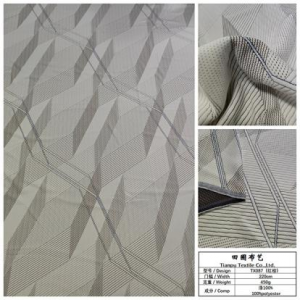The secret to a good night's sleep is the combination of a supportive mattress and the right fabric cover. Mattress knitted fabrics play a vital role in improving comfort and quality, making them an integral part of the textile process for mattress fabric production.
The textile process for mattress fabrics begins with the selection of high-quality raw materials. Natural and synthetic fibers, such as cotton, polyester, bamboo, and nylon, are commonly used to produce mattress fabrics. These fibers have been carefully selected for durability, breathability and softness, all of which contribute to a comfortable and relaxing sleep experience.
Once the raw material is selected, the next step is spinning. During spinning, fibers are twisted and drawn into thin threads. This process converts loose fibers into yarns, which are the building blocks of fabrics.
After spinning, the yarn is ready for knitting. Knitting is a technique that involves interlocking loops of yarn to form flexible fabric structures. Knitted fabrics are known for their stretch, breathability and ability to conform to the shape of the body. When it comes to mattress fabrics, knitting creates the perfect balance of softness and support.
The knitted fabric is then subjected to various finishing processes to enhance its performance and aesthetics. These processes may include dyeing, printing and coating. Dyeing can add vibrant colors to fabrics, while printing can create patterns or designs. Coatings, on the other hand, can improve the durability, water resistance, or other specific properties of fabrics.
Once the fabric is complete, it undergoes quality control checks to ensure it meets the required standards. This includes checking for any defects such as holes, loose threads or uneven staining. Only fabrics that pass these quality checks enter the final stage of the textile process.
The final stage involves creating the mattress cover using the knitted fabric. Fabric is cut and stitched to fit mattress size. We pay special attention to the seams, as they should be strong and secure, able to withstand constant use and movement.
There are several key advantages to using a knitted fabric for your mattress cover. First, the stretchability of the fabric allows it to conform to the contours of the mattress, providing a snug fit and minimizing wrinkling. This ensures a smooth and comfortable surface while sleeping. Additionally, the breathability of the knitted fabric promotes better airflow, preventing moisture and heat build-up that can cause discomfort during sleep.
In summary, the textile process for mattress knitted fabric production involves a series of carefully executed steps, from the selection of high-quality raw materials to the final making of the mattress cover. In this process, the use of knitted fabrics plays a vital role in enhancing comfort and quality. The stretch and breathability of the knitted fabric help provide a supportive and comfortable sleeping surface for a good night's sleep. So next time you're enjoying a restful night's sleep, remember the intricate process behind making mattress fabrics.
Post time: Aug-09-2023






